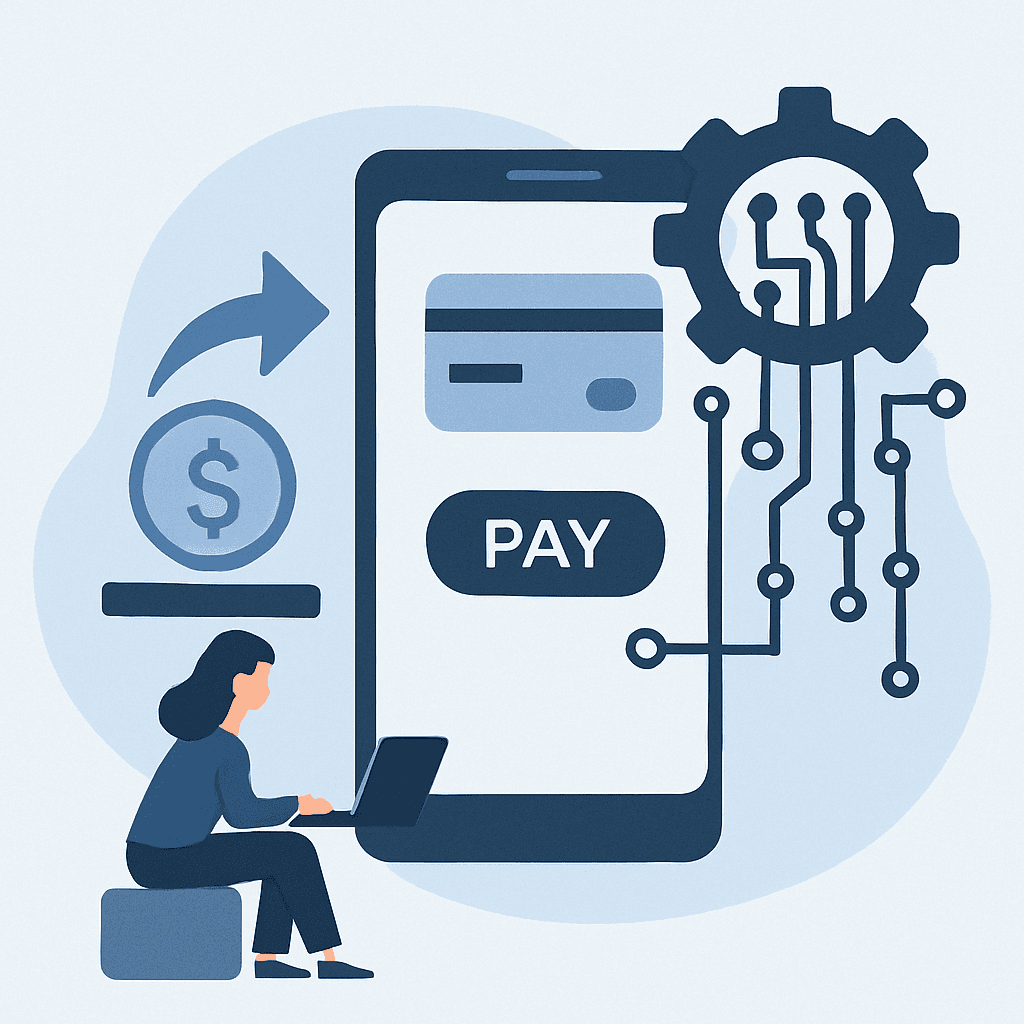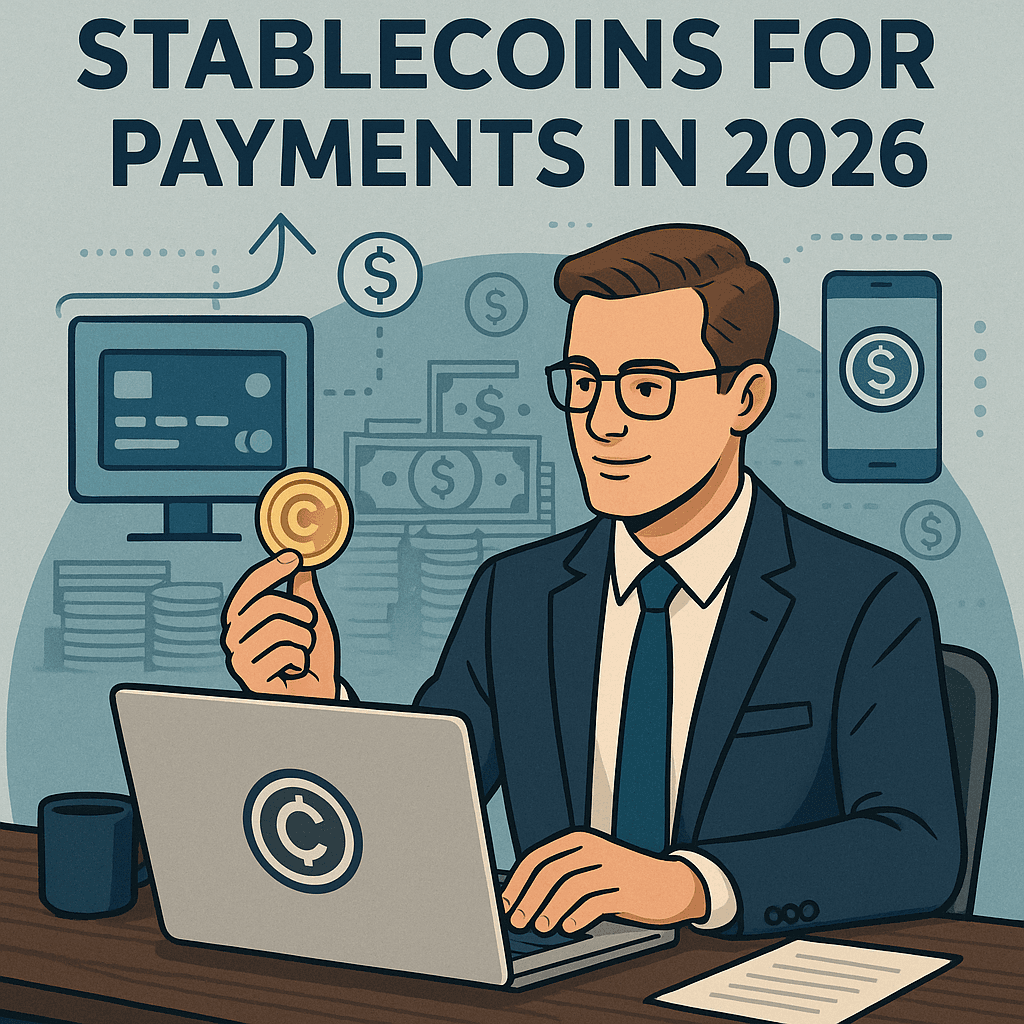The payments industry is experiencing its most fundamental transformation in decades. While traditional payment platforms have focused on optimizing the simple act of moving money from point A to point B, forward-thinking businesses are discovering that this approach leaves massive value on the table. The embedded payments market reached $24.7 billion in 2024 and is set to grow at a 30.3% CAGR through 2034, signaling a seismic shift toward payments that do more than just transfer funds.
The Commoditization Crisis in Traditional Payments {#commoditization-crisis}
Traditional payment processing has become increasingly commoditized. Whether you're using Stripe, Square, or PayPal, the core value proposition remains essentially the same: move money quickly and reliably. With contactless payments now accounting for more than two out of every three in-person purchases on the Mastercard network, the basic infrastructure for digital payments is mature and standardized.
But this commoditization has created a race to the bottom on fees and features. Payment processors are competing on marginal improvements, slightly faster settlement times, fractionally lower transaction costs, or incrementally better user interfaces. Meanwhile, businesses using these platforms struggle with:
Idle capital: Money sitting in settlement accounts earning zero return
Manual reconciliation: Hours spent matching transactions to business logic
Limited automation: Payment flows that require constant human intervention
Inflexible terms: Static payment structures that can't adapt to business conditions
For businesses seeking crypto treasury management solutions or stablecoin business accounts, traditional payment rails offer no path to programmable yield generation or DeFi treasury tools integration.
Enter Programmable Payments: Beyond Simple Money Movement
Programmable payments represent a fundamental evolution in how we think about financial transactions. Programmable payments can best be defined as payments executed when pre-programmed conditions are met, transforming money transfer from a discrete action into an intelligent, conditional process.
This isn't just about adding software on top of existing payment rails, it's about reimagining what payments can accomplish when they're built with programmable yield at their core. The embedded payments market reached $24.7 billion in 2024 and is set to grow at a 30.3% CAGR through 2034, signaling massive demand for smart contract powered financial infrastructure.
Smart Contracts: The Engine of Programmable Finance
Smart contracts are digital contracts stored on a blockchain that are automatically executed when predetermined terms and conditions are met. In the context of payments, this means businesses can embed complex business logic directly into their payment flows.
Consider these real-world applications:
Dynamic Pricing and Discounts: Instead of static invoice terms, businesses can offer discounts that automatically adjust based on payment timing, customer loyalty status, or market conditions. This crypto invoice with discount capability enables yield-optimized payment terms.
Escrow Automation: Smart contracts can automatically release payment when suppliers meet predefined conditions (e.g., a shipment arrives and passes an inspection), eliminating the need for manual verification and reducing disputes. This creates yield on crypto payments during escrow periods.
Subscription Intelligence: Rather than simple recurring charges, crypto subscriptions platform technology enables adaptive pricing based on usage patterns or automatically pausing when certain conditions aren't met, while generating passive income DeFi stablecoins on prepaid balances.
The Yield Revolution: Making Money Work Harder
One of the most overlooked opportunities in traditional payment processing is what happens to money during settlement periods. In conventional systems, funds sit idle in intermediary accounts, generating zero return for businesses seeking high yield business bank account crypto solutions.
Programmable yield platforms are changing this paradigm by integrating instant yield DeFi generation directly into the payment flow. Programmable money can transform business finance by automating yield optimization, and modern stablecoin yield infrastructure makes this possible at enterprise scale.
Real-World Yield Applications
Working Capital Optimization: Instead of keeping operational funds in low-yield business checking accounts, DeFi business banking platforms automatically deploy idle capital into higher-yielding opportunities while maintaining liquidity for business operations. This crypto cash management for businesses approach can generate 4-8% APY on operational funds.
Payment Float Revenue: The time between when a payment is initiated and when it's needed becomes a revenue-generating period, with funds automatically earning returns through Solana DeFi yield protocols or USDC yield account for companies solutions.
Treasury Automation: Businesses can implement stablecoin treasury strategy rules for how excess cash should be deployed, automatically moving funds between operational accounts, yield generating smart accounts, and strategic reserves based on predefined thresholds.
Beyond Payments: Embedded Financial Infrastructure
Merchant demand for embedded payments solutions is only increasing, with the volume of payments through embedded channels expected to reach $6.5 trillion by 2025. But embedded payments are just the beginning of a broader trend toward integrated financial infrastructure that includes non-custodial yield account capabilities and DeFi yield routing automation.
The Platform Economy Advantage
Companies like Uber, Amazon, and Netflix didn't just embed payments, they reimagined the entire customer experience around programmable financial interactions. Uber's payments process was one of the earliest forms of embedded payments, a concept that entails the streamlining of a checkout process so consumers barely know they're hitting the 'pay' button.
This seamless integration creates several advantages:
Reduced friction: Customers complete transactions without leaving the platform
Better data insights: Complete view of customer behavior and transaction patterns
Increased control: Ability to implement custom business logic and payment terms
Revenue optimization: Opportunities to generate additional income from payment flows
API-First Infrastructure
API-based payments are projected to grow at the fastest CAGR during the forecast period, enabling non-financial companies to offer sophisticated financial services without building infrastructure from scratch.
This trend is democratizing access to advanced payment capabilities:
Banking-as-a-Service: Startups can offer bank-grade features without regulatory overhead
Custom Financial Products: Businesses can design payment flows tailored to their specific industry needs
Rapid Innovation: New features and capabilities can be deployed without hardware changes
Industry-Specific Transformations
Different industries are discovering unique applications for programmable payments that go far beyond traditional processing:
Supply Chain and Trade Finance
International trade involves lengthy customs clearance, regulatory approvals, and documentation. Each country has different trade laws, making compliance a costly, time-consuming process. Programmable payments can automate much of this complexity:
Automated customs declarations based on shipment data
Conditional releases tied to inspection results or delivery milestones
Cross-border compliance with automatic regulatory reporting
Healthcare and Insurance
The healthcare industry is experimenting with programmable payments for:
Outcome-based contracts where payments adjust based on patient results
Automated claims processing that reduces administrative overhead
Dynamic pricing for services based on patient risk factors or treatment complexity
Real Estate and Property Management
Property transactions involve complex escrow arrangements that are ideal for programmable automation:
Milestone-based releases tied to inspection results or financing approvals
Automated rent collection with late fee calculations and grace periods
Property management expenses that adjust based on occupancy or maintenance needs
The Technology Stack Enabling This Evolution
The rise of programmable payments is enabled by several converging technologies:
Blockchain and Smart Contracts
Ethereum introduced the Ethereum Virtual Machine (EVM) as the computation engine that manages the state of the blockchain and enables smart contract functionality. However, newer platforms like Solana are offering faster, more cost-effective alternatives for high-frequency payment applications.
Artificial Intelligence and Machine Learning
AI and machine learning will have an even bigger impact on payments in 2025. Goldman Sachs predicts over $200 billion in AI investments in Europe next year. AI is enhancing programmable payments through:
Predictive analytics for optimizing payment timing and terms
Fraud detection that adapts to new threat patterns in real-time
Dynamic pricing algorithms that adjust based on market conditions
Tokenization and Digital Assets
On-chain tokenization is moving from concept to practice, with players like Visa, Mastercard, J.P. Morgan and other commercial banks exploring or piloting real-world tokenized payment and financial systems. This enables:
Programmable compliance with regulations built into the payment instrument itself
Fractional ownership of assets through tokenized representations
Instant settlement without traditional banking intermediaries
Regulatory Considerations and Compliance
As payments become more programmable, regulatory frameworks are evolving to address new capabilities and risks:
Digital Asset Regulations
Recent regulatory developments, including the GENIUS Act in the United States, are providing clearer frameworks for how programmable payments can operate within existing financial regulations.
Privacy and Security
The privacy and security of data remains as one of the key issues in embedded payment solutions. Programmable payment platforms must balance automation capabilities with robust security measures and regulatory compliance.
International Coordination
As programmable payments enable more seamless cross-border transactions, international regulatory coordination becomes increasingly important to prevent fragmentation and ensure consistent standards.
Real-World Success Stories
Several companies are already demonstrating the power of programmable payments:
Enterprise Applications
Major corporations are implementing programmable payment systems for:
Dynamic supplier payments that adjust based on delivery performance
Automated expense management with built-in approval workflows
Treasury optimization that maximizes returns on operational capital
Consumer Applications
Consumer-facing applications include:
Usage-based pricing for software and services
Conditional subscriptions that pause during periods of non-use
Loyalty programs where rewards are automatically calculated and distributed
The Competitive Advantage of Early Adoption
Businesses that embrace programmable payments early are discovering significant competitive advantages:
Operational Efficiency
Automation of payment workflows reduces manual processing costs and eliminates human errors. Companies report 50% reductions in payment-related administrative work after implementing programmable systems.
Capital Efficiency
By making idle funds productive and optimizing payment timing, businesses can improve their overall return on capital. Some companies are generating additional annual returns of 3-5% on their working capital through intelligent payment automation.
Customer Experience
Programmable payments enable more flexible and responsive customer interactions. Dynamic pricing, instant refunds, and conditional service delivery create better customer experiences while reducing operational complexity.
Looking Ahead: The Future of Programmable Payments
Programmable payments are set to reshape the future of cross-border transactions by combining the power of blockchain and smart contracts to eliminate inefficiencies, reduce costs, and offer unparalleled speed and security.
Emerging Trends
Several trends will shape the evolution of programmable payments:
Voice-Activated Payments: Voice payments are projected to hit $164 billion by 2025, with programmable logic enabling complex transactions through simple voice commands.
IoT Integration: Internet of Things devices will trigger programmable payments automatically, enabling new business models around usage-based services and automated supply chain management.
AI-Driven Optimization: Machine learning algorithms will continuously optimize payment terms, timing, and routing to maximize value for all parties involved.
Industry Consolidation and Specialization
As the programmable payments market matures, we're likely to see:
Platform specialization around specific industries or use cases
Infrastructure consolidation as successful platforms acquire smaller competitors
Partnership ecosystems where different providers specialize in complementary capabilities
The Path Forward for Businesses
For businesses considering the transition to programmable payments, several factors should guide the decision:
Assessment of Current Pain Points
Companies should start by identifying where traditional payment systems create friction:
Manual reconciliation processes
Idle capital not generating returns
Inflexible payment terms that don't match business reality
Limited automation capabilities
Pilot Program Strategy
Rather than wholesale replacement of existing systems, successful companies often start with pilot programs that demonstrate value:
Limited use cases with clear success metrics
Gradual expansion based on proven results
Integration planning with existing business systems
Technology Partner Selection
Choosing the right platform partner is crucial for success:
Technical capabilities that match business requirements
Regulatory compliance in relevant jurisdictions
Scalability to support business growth
Integration support for existing systems
Case Study: The Mobile Point-of-Sale Revolution
The crypto point of sale system market illustrates how programmable payments can transform entire industries. Traditional POS systems required expensive hardware and locked businesses into rigid fee structures. Modern Solana POS app solutions offer:
Zero fee payment processor crypto capabilities through alternative revenue models
Accept crypto payments in store with instant settlement and immediate access to funds
Accept USDC payments with automatic conversion and yield on crypto payments
Integrated business tools for inventory and customer management
This transformation demonstrates how programmable payments don't just improve existing processes—they enable entirely new business models. Platforms like RebelFi's mobile POS system exemplify this evolution, offering businesses accept crypto payments in store capabilities with zero fee payment processor crypto models that generate revenue through yield on crypto payments rather than traditional transaction fees.
Frequently Asked Questions
What are programmable payments?
Programmable payments are automated financial transactions that execute when predetermined conditions are met through smart contracts. Unlike traditional payments that simply move money, programmable payments can include conditional logic, yield generation, and automated business workflows.
How do smart contracts enable programmable yield?
Smart contracts automatically deploy idle funds into DeFi yield routing protocols during payment processes, enabling businesses to earn instant yield DeFi returns on capital that would otherwise sit idle in traditional payment systems.
What's the difference between embedded payments and programmable payments?
Embedded payments integrate payment functionality into non-financial platforms, while programmable payments add conditional logic and automation. Programmable yield platforms combine both concepts to create intelligent financial infrastructure.
Can traditional businesses use crypto treasury management?
Yes, modern stablecoin business account solutions and DeFi treasury tools are designed for traditional businesses, offering crypto cash management for businesses without requiring deep technical knowledge.
How do crypto point of sale systems work?
A crypto point of sale system like a Solana POS app enables businesses to accept crypto payments in store by generating QR codes that customers scan with their wallets. The merchant receives USDC payments or other stablecoins with zero fee payment processor crypto models.
What is a non-custodial yield account?
A non-custodial yield account gives businesses complete control over their funds while automatically generating returns through yield generating smart accounts and DeFi yield routing without giving up custody to third parties.
How can businesses earn yield on idle capital?
Through crypto treasury management platforms that offer high yield business bank account crypto solutions, businesses can implement stablecoin treasury strategy approaches that automatically deploy idle funds into Solana DeFi yield protocols.
Are programmable payments regulatory compliant?
Modern stablecoin yield infrastructure platforms are designed with compliance in mind, offering DeFi business banking solutions that meet regulatory requirements while providing programmable yield capabilities.
Key Takeaways: The Future is Programmable
Traditional payment processing
has become commoditized, offering limited value beyond basic money movement
Programmable payments with smart contract integration enable conditional logic, automation, and yield on crypto payments
The embedded payments market will reach $6.5 trillion by 2025, driven by demand for intelligent financial infrastructure
Crypto treasury management and stablecoin business accounts offer superior returns compared to traditional banking
Zero fee payment processor crypto models and yield generating smart accounts create new revenue opportunities
Early adopters of programmable yield platforms gain significant competitive advantages in capital efficiency
The future of payments isn't just about moving money faster or cheaper. It's about making money smarter, more productive, and more aligned with the dynamic needs of modern business. That future is arriving faster than most companies realize, and the time to prepare is now.



